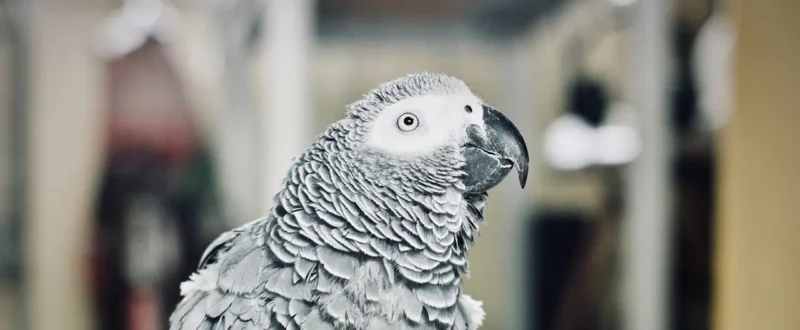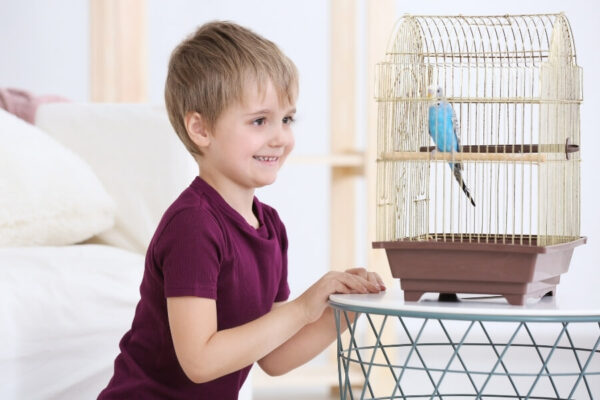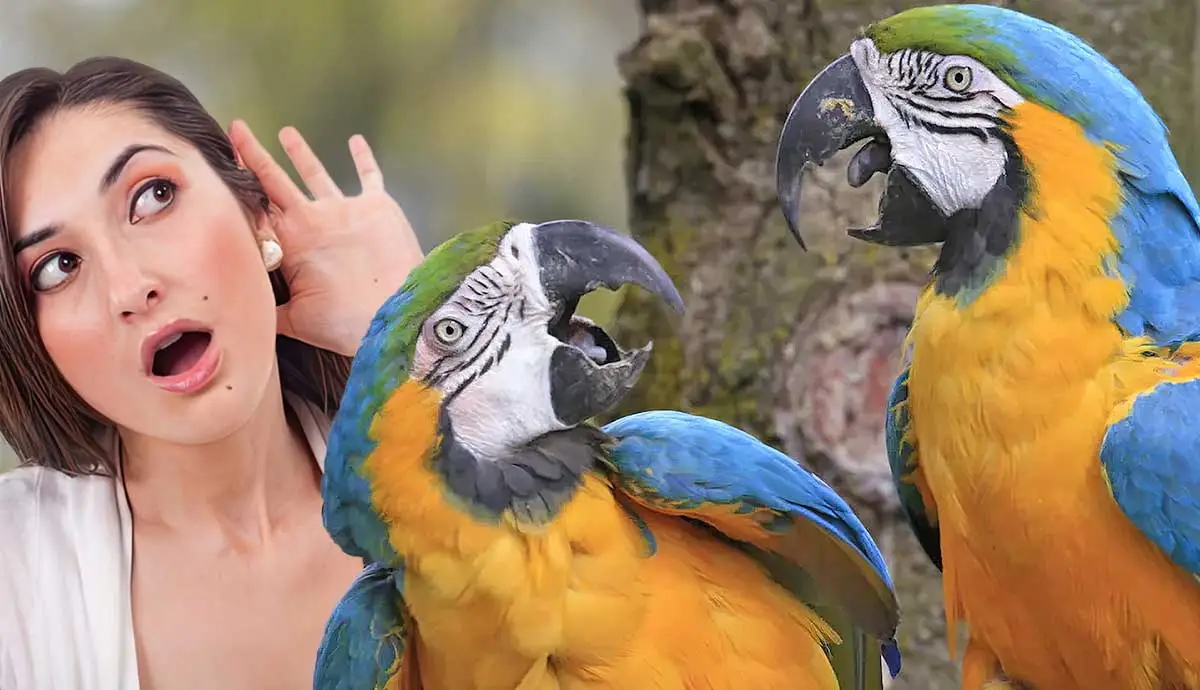Blogs, Behaviors & Training
Do Parrots Understand What They Say?
Unraveling the Mystery of Parrot Speech
Do Parrots Understand What They Say Parrots, with their vibrant plumage and remarkable vocal abilities, have long captivated the human imagination. From mimicking human speech to communicating with their peers, these intelligent birds have sparked curiosity about the extent of their linguistic comprehension. The question arises: Do parrots truly understand the words they utter? In this comprehensive exploration, we delve into the fascinating world of parrot cognition to uncover the truth behind their vocalizations.
Decoding Parrot Speech: Insights into Avian Intelligence
Parrots belong to the order Psittaciformes, encompassing over 350 species known for their distinctive vocalizations and cognitive prowess. Among these, African grey parrots (Psittacus erithacus) and Amazon parrots (genus Amazona) stand out for their exceptional ability to mimic human speech. Researchers have conducted numerous studies to assess whether these vocalizations are mere mimicry or indicative of genuine comprehension.
Cognitive Studies: Assessing Language Proficiency in Parrots
Dr. Irene Pepperberg’s groundbreaking work with an African grey parrot named Alex revolutionized our understanding of avian cognition. Through extensive training and interaction, Alex demonstrated a remarkable grasp of language concepts, including categorization, numerical understanding, and even the ability to form novel phrases. His responses suggested a level of comprehension beyond simple mimicry, providing compelling evidence for the cognitive abilities of parrots.
The Neurobiology of Parrot Communication

To comprehend whether parrots understand what they say, we must delve into the neural mechanisms underlying their vocalizations. Like humans, parrots possess complex vocal learning pathways in their brains, particularly in regions such as the ventral portion of the medial nidopallium (VMP). These pathways enable them to imitate sounds and learn vocalizations through social interaction, a trait shared by few other animal species.
Vocal Learning in Parrots: Insights from Neuroscientific Research
Neuroscientists have employed advanced imaging techniques to map the brain regions involved in parrot vocalizations. Studies using functional magnetic resonance imaging (fMRI) and electrophysiological recordings have revealed intricate neural networks dedicated to vocal learning and production. These findings corroborate the notion that parrots possess specialized brain circuitry for language acquisition, further supporting the idea that their speech may entail a degree of comprehension.
Contextual Understanding: The Role of Social Learning
While parrots’ vocalizations often mirror human speech patterns, the key lies in understanding the context in which these utterances occur. Parrots, renowned for their social nature, learn vocalizations through interaction with conspecifics and human companions. This social learning process imbues their speech with meaning, enabling them to convey emotions, solicit attention, and respond to environmental cues.
Socialization and Vocalization: Observations in Natural and Captive Settings

Observational studies of wild parrot populations have shed light on the role of socialization in vocal development. Young parrots learn vocalizations from their parents and peers through imitation and reinforcement, gradually refining their repertoire over time. Similarly, captive parrots exhibit remarkable flexibility in adapting their speech to match the linguistic patterns of their human caregivers, indicating a capacity for contextual understanding.
The Debate Continues: Challenges in Interpreting Parrot Speech
Despite significant advancements in our understanding of parrot cognition, the question of whether they truly understand what they say remains a subject of debate among researchers. While evidence suggests that parrots possess cognitive abilities akin to those of young children, nuances in their comprehension and expression warrant further investigation.
Limitations and Considerations: Factors Influencing Parrot Communication
Several factors influence the interpretation of parrot speech, including individual differences in cognitive abilities, environmental enrichment, and socialization experiences. Additionally, the inherent complexity of language comprehension poses challenges in discerning the extent to which parrots grasp the meaning of their vocalizations.
Exploring Parrot Vocalization in Ecological Contexts
To gain a comprehensive understanding of parrot speech, it’s essential to explore how these birds utilize vocalizations in their natural habitats. Parrots inhabit diverse environments, from lush rainforests to arid savannas, each presenting unique challenges and opportunities for communication.
Ecological Significance of Parrot Vocalizations
Parrot vocalizations serve multiple functions essential for survival and social cohesion within their ecosystems. In the wild, parrots use calls and vocalizations to maintain contact with flock members, signal alarm in response to predators, establish territory boundaries, and coordinate group movements during foraging and breeding activities.
Social Dynamics: Vocal Communication in Flock Dynamics
Within parrot flocks, vocalizations play a crucial role in maintaining social bonds and hierarchies. Vocal exchanges between individuals convey information about dominance status, reproductive readiness, and group cohesion. For example, during courtship displays, male and female parrots engage in elaborate vocal duets to strengthen pair bonds and synchronize breeding efforts.
Regional Variation: Dialects and Vocal Repertoire
One intriguing aspect of parrot vocalizations is the presence of regional dialects and vocal variations among populations. Studies have documented distinct vocalizations in different geographical regions, influenced by factors such as habitat type, social structure, and historical isolation. These dialects, akin to human accents, reflect the unique cultural identity of parrot communities and highlight the complexity of avian communication.
Case Studies: Dialect Diversity in Parrot Species
Research on species such as the yellow-naped amazon (Amazona auropalliata) and the monk parakeet (Myiopsitta monachus) has revealed pronounced regional variations in vocalizations. In some cases, these dialects serve as markers of genetic relatedness and population connectivity, facilitating the study of evolutionary processes and conservation efforts.
Implications for Conservation and Management
Understanding the intricacies of parrot vocalizations has significant implications for their conservation and management. By monitoring vocalizations in the wild, researchers can assess population health, identify habitat threats, and develop targeted conservation strategies. Furthermore, efforts to mitigate human-induced disturbances, such as habitat loss and noise pollution, can help preserve the acoustic landscapes essential for parrot communication.
Citizen Science Initiatives: Engaging Communities in Parrot Monitoring
Citizen science projects leverage the collective efforts of volunteers to monitor parrot populations and track vocalizations in various habitats. These initiatives not only contribute valuable data to scientific research but also raise awareness about the importance of conserving parrot species and their habitats among local communities.
Future Directions: Advancing Parrot Communication Research
As technology and methodologies continue to evolve, new avenues for studying parrot communication emerge. Advances in bioacoustics, machine learning, and remote sensing enable researchers to analyze vocalizations with unprecedented precision and scale. Integrating these tools with field observations and behavioral experiments promises to unlock deeper insights into the complexities of parrot communication.
Interdisciplinary Collaborations: Bridging Gaps in Parrot Science
Collaborations between biologists, linguists, neuroscientists, and conservationists are essential for advancing our understanding of parrot communication from multiple perspectives. By combining expertise from diverse disciplines, researchers can address complex questions about language evolution, cognitive mechanisms, and conservation priorities in parrot species worldwide.
Conclusion: Unraveling the Enigma of Parrot Speech
In conclusion, the question of whether parrots understand what they say encapsulates the complexities of avian cognition and communication. While research has provided compelling evidence for the cognitive abilities of parrots, including their capacity for language learning and social interaction, further studies are needed to elucidate the nuances of their linguistic comprehension. By unraveling the enigma of parrot speech, we gain valuable insights into the remarkable abilities of these intelligent birds and deepen our appreciation for the diversity of life on our planet.

